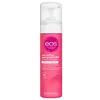What's inside
What's inside
 Key Ingredients
Key Ingredients

 Benefits
Benefits

 Concerns
Concerns

 Ingredients Side-by-side
Ingredients Side-by-side

Water
Skin ConditioningCetyl Alcohol
EmollientPropylene Glycol
HumectantGlycerin
HumectantCocoglycerides
EmollientStearyl Alcohol
EmollientLaureth-23
CleansingCI 77891
Cosmetic ColorantColloidal Oatmeal
AbsorbentPetrolatum
EmollientGlyceryl Stearate Se
EmulsifyingButyrospermum Parkii Oil
EmollientButyrospermum Parkii Butter
Skin ConditioningHelianthus Annuus Seed Oil
EmollientAloe Barbadensis Leaf Juice
Skin ConditioningPunica Granatum Extract
AstringentRubus Idaeus Leaf Extract
Skin ConditioningDimethicone
EmollientAscorbyl Palmitate
AntioxidantCaprylyl Glycol
EmollientParfum
MaskingPhenoxyethanol
PreservativeMagnesium Aluminum Silicate
AbsorbentPotassium Sorbate
PreservativeCarbomer
Emulsion StabilisingHexylene Glycol
EmulsifyingDisodium EDTA
Tocopheryl Acetate
AntioxidantSodium Hydroxide
BufferingCitric Acid
BufferingSodium Benzoate
MaskingHexyl Cinnamal
PerfumingLinalool
PerfumingButylphenyl Methylpropional
PerfumingLimonene
PerfumingCitronellol
PerfumingHydroxycitronellal
PerfumingWater, Cetyl Alcohol, Propylene Glycol, Glycerin, Cocoglycerides, Stearyl Alcohol, Laureth-23, CI 77891, Colloidal Oatmeal, Petrolatum, Glyceryl Stearate Se, Butyrospermum Parkii Oil, Butyrospermum Parkii Butter, Helianthus Annuus Seed Oil, Aloe Barbadensis Leaf Juice, Punica Granatum Extract, Rubus Idaeus Leaf Extract, Dimethicone, Ascorbyl Palmitate, Caprylyl Glycol, Parfum, Phenoxyethanol, Magnesium Aluminum Silicate, Potassium Sorbate, Carbomer, Hexylene Glycol, Disodium EDTA, Tocopheryl Acetate, Sodium Hydroxide, Citric Acid, Sodium Benzoate, Hexyl Cinnamal, Linalool, Butylphenyl Methylpropional, Limonene, Citronellol, Hydroxycitronellal
Water
Skin ConditioningPalmitic Acid
EmollientTriethanolamine
BufferingIsopentane
SolventSorbitol
HumectantStearic Acid
CleansingGlycerin
HumectantSorbitan Stearate
EmulsifyingIsobutane
Sunflower Seed Oil Glyceride
EmollientHydroxyethylcellulose
Emulsion StabilisingPEG-12 Dimethicone
Skin ConditioningAvena Sativa Kernel Flour
AbrasivePhenoxyethanol
PreservativeHydroxypropyl Methylcellulose
Emulsion StabilisingMethylparaben
PreservativePropylparaben
PreservativeEthylparaben
PreservativeBenzaldehyde
MaskingPanthenol
Skin ConditioningTocopheryl Acetate
AntioxidantAloe Barbadensis Leaf Juice
Skin ConditioningAllantoin
Skin ConditioningWater, Palmitic Acid, Triethanolamine, Isopentane, Sorbitol, Stearic Acid, Glycerin, Sorbitan Stearate, Isobutane, Sunflower Seed Oil Glyceride, Hydroxyethylcellulose, PEG-12 Dimethicone, Avena Sativa Kernel Flour, Phenoxyethanol, Hydroxypropyl Methylcellulose, Methylparaben, Propylparaben, Ethylparaben, Benzaldehyde, Panthenol, Tocopheryl Acetate, Aloe Barbadensis Leaf Juice, Allantoin
 Reviews
Reviews

Alternatives
Ingredients Explained
These ingredients are found in both products.
Ingredients higher up in an ingredient list are typically present in a larger amount.
Aloe Barbadensis Leaf Juice comes from leaves of the aloe plant. Aloe Barbadensis Leaf Juice is best known for helping to soothe sunburns. It is also anti-inflammatory, moisturizing, antiseptic, and can help heal wounds.
Aloe is packed with good stuff including Vitamins A, C, and E. These vitamins are antioxidants, which help fight free-radicals and the damage they may cause. Free-radicals are molecules that may damage your skin cells, such as pollution.
Aloe Barbadensis Leaf Juice also contains sugars. These sugars come in the form of monosaccharides and polysaccharides, folic acid, and choline. These sugars are able to help bind moisture to skin.
It also contains minerals such as calcium, 12 anthraquinones, fatty acids, amino acids, and Vitamin B12.
Learn more about Aloe Barbadensis Leaf JuiceGlycerin is already naturally found in your skin. It helps moisturize and protect your skin.
A study from 2016 found glycerin to be more effective as a humectant than AHAs and hyaluronic acid.
As a humectant, it helps the skin stay hydrated by pulling moisture to your skin. The low molecular weight of glycerin allows it to pull moisture into the deeper layers of your skin.
Hydrated skin improves your skin barrier; Your skin barrier helps protect against irritants and bacteria.
Glycerin has also been found to have antimicrobial and antiviral properties. Due to these properties, glycerin is often used in wound and burn treatments.
In cosmetics, glycerin is usually derived from plants such as soybean or palm. However, it can also be sourced from animals, such as tallow or animal fat.
This ingredient is organic, colorless, odorless, and non-toxic.
Glycerin is the name for this ingredient in American English. British English uses Glycerol/Glycerine.
Learn more about GlycerinPhenoxyethanol is a preservative that has germicide, antimicrobial, and aromatic properties. Studies show that phenoxyethanol can prevent microbial growth. By itself, it has a scent that is similar to that of a rose.
It's often used in formulations along with Caprylyl Glycol to preserve the shelf life of products.
Tocopheryl Acetate is AKA Vitamin E. It is an antioxidant and protects your skin from free radicals. Free radicals damage the skin by breaking down collagen.
One study found using Tocopheryl Acetate with Vitamin C decreased the number of sunburned cells.
Tocopheryl Acetate is commonly found in both skincare and dietary supplements.
Learn more about Tocopheryl AcetateWater. It's the most common cosmetic ingredient of all. You'll usually see it at the top of ingredient lists, meaning that it makes up the largest part of the product.
So why is it so popular? Water most often acts as a solvent - this means that it helps dissolve other ingredients into the formulation.
You'll also recognize water as that liquid we all need to stay alive. If you see this, drink a glass of water. Stay hydrated!
Learn more about Water